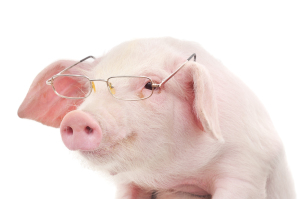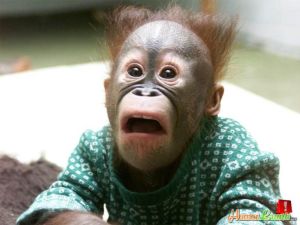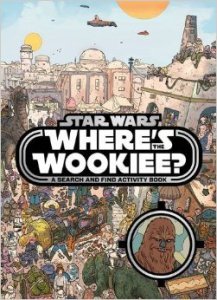Review: Where’s The Wookiee? (or, Plenty Of Wooks, Nary A Wally In Sight)
Star Wars: Where’s the Wookiee? is a ‘search and find’ activity book published by Egmont UK. Not familiar with that phrasing? I wasn’t, either, but a quick look at the front will tell you all you need to know: It’s Where’s Wally? in Space! Or Tatooine. Or Hoth. Or the Death Star – which is actually in space, so I was somewhat right! Also it’s not Wally you’re looking for, but Chewbacca. Okay I was somewhat wrong.
Perhaps it is derogatory to say ‘it’s Where’s Wally? in space’, in the same way that is colloquially meant when someone says ‘it’s just X but in Y’. But I genuinely don’t mean it to be, and hope it isn’t taken that way – both because, well, it’s an accurate descriptor/helpful shorthand, and because I love Where’s Wally? (or ‘Where’s Waldo?’ as it is called in the US and Canada, I’m given to understand).
Though saying that, holy Threepio does it make reviewing this thing rather difficult. Part of the reviewing process is to describe your experience, but how am I to do that when that’s the whole point of the book; without detailing my searching process, and thus potentially spoil your own experience? ‘I was looking for Chewbacca in [REDACTED], but couldn’t find him for ages. I looked in [REDACTED], [REDACTED] and [REDACTED], and almost gave up when I caught sight of him out of the corner of my eye, lounging around in [REDACTED]. It was quite [REDACTED].’ So, if my detailing of that part in the review seems a bit bare, that’ll be why, and you have my apologies.
The book is comprised of 15 double page drawings, each, in the tradition, filled to the brim with people and various animals, and your task is, as the title suggests, to find the Wookiee, Chewbacca, in the tumultuous assemblage of meaty sapients. The book begins by giving a bit of story: Chewie is on the run from bounty hunters. That’s pretty much it. It’s an odd addition, but it’s not entirely pointless; it does give you a visual reference for Chewbacca, in case you’re stuck and unsure if the brown blob you’re looking at is indeed the infamous Wookiee, as well as Han, the Millenium Falcon and some of the bounty hunters who are, well, hunting the bounty (and whom you can seek out in each location as a side activity).
By the way, for some reason I misread the opening paragraphs to mean that Chewie only showed up once in the entire book. This, of course, isn’t true, and our hirsute hero does make an appearance in each drawing. But since I thought it possible that someone else could theoretically make the same mistake, I thought it best to include this note. Look, I just had a minor lapse in stupidity. I promise, I really am smart!

I mentioned how this is essentially Where’s Wally? in space, in terms of the type of puzzle, yet it holds true when speaking of the visuals, as well. The cartoonish art is very similar, and comfortingly so, to Wally; mixing that sort of simple detail on live things while there’s almost exhaustive texture on inanimate objects, combined with the sheer quantity of it so that there’s hardly ever a square inch lacking any detail, it all culminating in an almost overpowering visual world.
At first (second, third and fourth) glance it looks so very chaotic and confusing – deliberately so, of course. But while it may stay confusing, every detail, upon inspection, seems to make sense in that world. I’m looking at the Jawa Market, as I write, and there’s Jawas and other beings tending some sort of bar in one place, others auctioning stormtrooper helmets, living stormtroopers looking for droids, Jawas fixing and selling droids (including one that looks suspiciously like BB-8), Tuskens herding their banthas, a shephard herding what appear to be gizka, a food market, yet another bar – everything that you could reasonably expect at a market. To repeat, it’s still overwhelming, but it makes sense.
And it’s beautiful. Well, beautiful to me. You may feel otherwise (and that’s perfectly fine, honest!) I really don’t know how the artists managed that. It may be overwhelming, but it’s still a treat to behold. From Coruscant, to Cloud City, to Jabba’s Palace (okay maybe not that one), I’d happily stick all these drawings up on my wall.

Also: I’m not an artist myself, but I can’t understand how they can draw so much without copy and pasting anything – well, strictly not true: I may be incorrect, but in one drawing, the ranks of Imperials do seem to be copy and pasted. But beyond that, everything is drawn so that it’s all unique. Considering the amount, that’s impressive, and I don’t know how they did so without losing their marbles.
But this isn’t so much to say ‘they didn’t do something that I think is bad, so yay!’ but rather to discuss something that I’ve always enjoyed in these types of games: micro stories.
Something I like to do is to pick an individual – not the subjects themselves, but a random background character, and try to imagine their story. What their life has been like, what actions led up to that captured moment, and what happens after. I call those micro stories. For instance: in The Cantina, one alien with a bulging cranium is on his knees and in the middle of the act of picking up his glasses, on the dance floor, while another alien, this one two-headed, looms over Bighead, seemingly mocking him. Perhaps Bighead was a bit of a nerd? Did he come alone, hoping to make friends? Or did his friends drag him along, thinking the social time would do him good? (Personal experience suggests this to be wrong).

This is something that I enjoy doing; it can extend the life of the book long after I’ve found Wally, Chewie, the bounty hunters or anyone else the book suggests I seek out. And because this background, otherwise unimportant visual chaff isn’t copy and pasted, I’m afforded the chance to explore these characters and pretend that they’re real people, and that real thought has gone into the drawing.
That’s not to say it’s entirely a blank canvas, and that I have to bring the story to the character. The story is already there, I’m just bringing my own spin to it. Those glasses were already on the floor, and there are other glimpses of, for lack of a better term in a multi-species galaxy, humanity. It’s there on Hoth, with the rebel soldier suffering an attack of PTSD; it’s in the Ewoks offering a teddy bear to the Great God Threepio on Endor; it’s in the Sullustan cleaning up a water leak in the Imperial Hanger; it’s in the Viking R2 unit; it’s in the varactyl, which is simultaniously being ridden by Kit Fisto, while also being attacked by a squad of Gungans, on Geonosis (don’t ask, just roll with it). This humour and humanity (sapienity?) is something that I loved in Wally, and I’m very pleased to see that it’s present in this book.
But that’s not what the book is primarily about. You are tasked, after all, with finding Chewbacca. Again, I’m not going to go into too much detail. I will say, however, that on many I found him quickly enough. On others it was a bit of a challenge, and on one or two I still haven’t found him (thank you, Kashyyyk, for the carpet of Wookiees – that’s the correct plural, right?). And at the end, the book offers a list of suggestions of other characters that you can seek out in each location.
It is, ultimately, a passtime that you, the reader, will have likely come across at some point in your life. If, like me, you enjoyed it, then you’ll probably like this Star Wars version, too. If you don’t, that’s fine, and I wish you all the best in whatever you do enjoy. If you’ve never come across this type of puzzle, then it’s entirely likely that you’re an alien, either implanted with false memories so that you are not found out (sorry to break it to you), or are entirely aware that you’re an alien, and are trying, The Americans style, to pretend to be one of us. In which case … yes, many humans have indeed never played this. Nothing weird about not having done so, at all. Continue not playing this game. I’ll just be over here, making a phone call to the gover…ness. Yes, the governess. Her dress for the county ball has arrived, and she’ll be eager to make a good impression for the Duke. That’s a totally human thing.
I joke, of course, but there is an interesting use to these puzzles: they can make you like Sherlock Holmes. For there’s two steps to his method: the first is observation, the second deduction (more accurately induction). This can’t help you with the latter, but the former, very much so. Puzzles like Where’s The Wookiee? and Spot the Difference exercise your ability to spot minor details, things you’d otherwise overlook, and that’s something people – myself included – have a tendency to do. That sounds like I’m being grouchy, but it’s an actual phenomenon known to psychology. People generally don’t, on a conscious level, spot minor details that inform them of their surroundings, but this is a skill that people have, and Sherlock Holmes had (yes, I’m fully aware that he’s fictional).

Other people who exercise similar skills in their various profession, such as the very real psychological illusionist Derren Brown, and other mentalists, really do suggest doing such puzzles to improve your ability to spot visual cues. So if for nothing else, it’s a great way to become Sherlock Holmes. Deerstalker sold seperately.
Star Wars: Where’s the Wookiee?, published by Egmont UK, is out now in UK bookstores. Thank you to Egmont for providing a copy for review purposes.
Author: Michael Dare
Michael Dare is a writer, lives in the UK, and has been slowly coming to terms with the realization that he is not Sherlock, but Watson. He loves Star Wars, dislikes blue milk. Enjoys jumping sharks. Survives on the tears of sexist men, and cheeseburgers.

